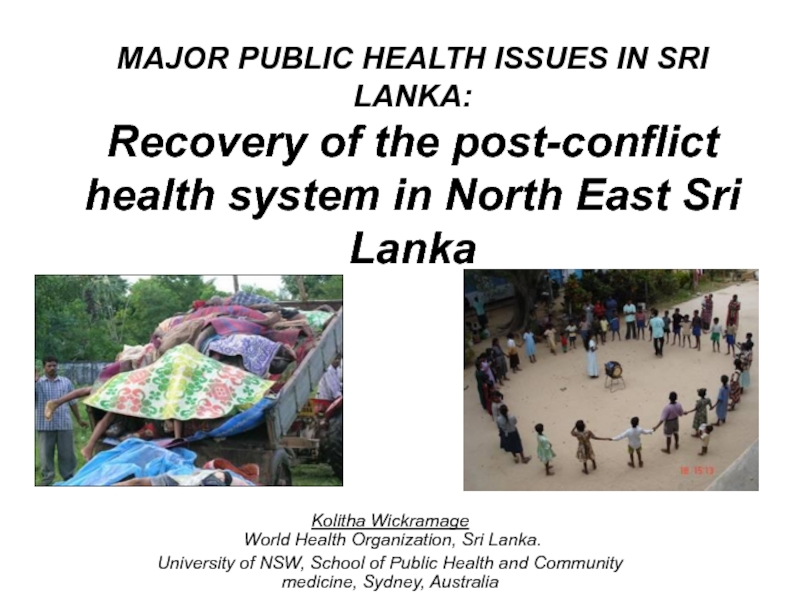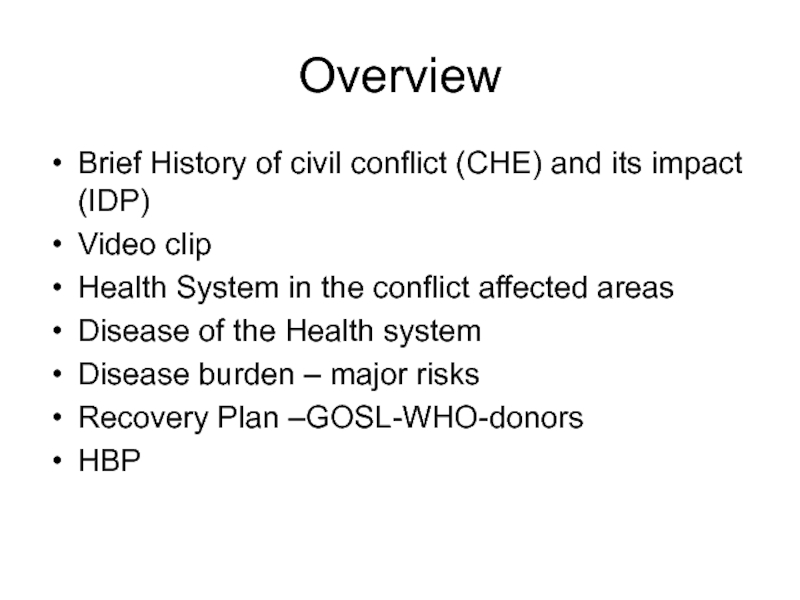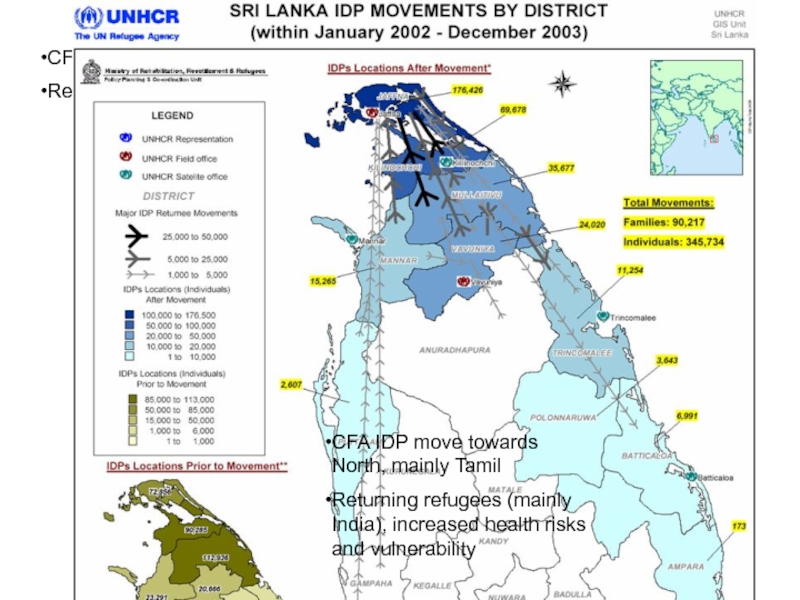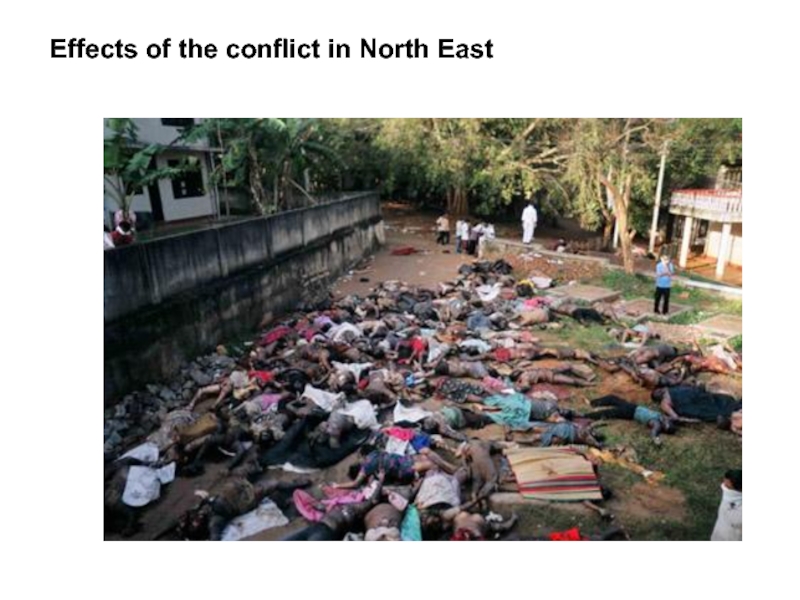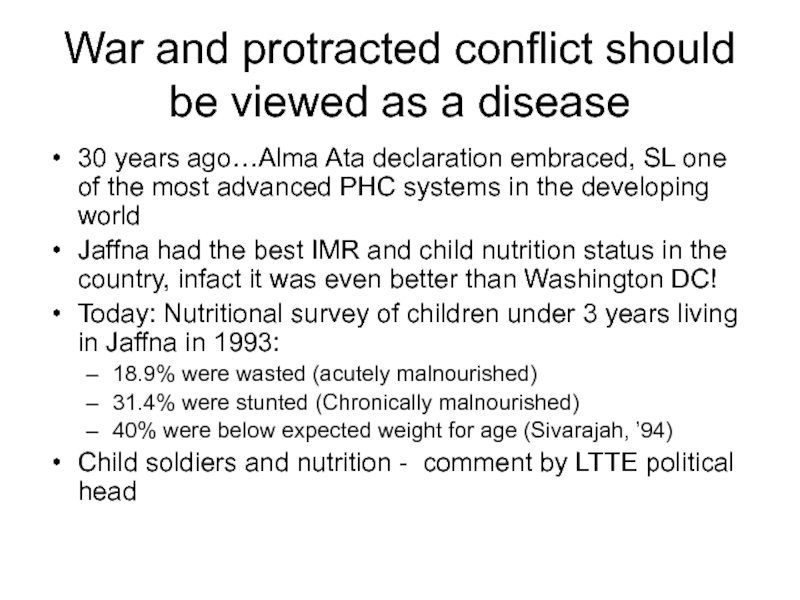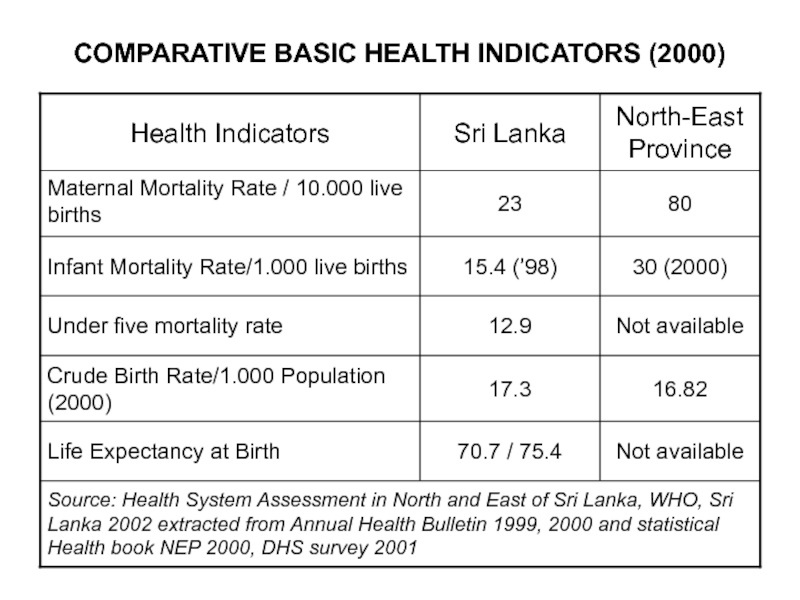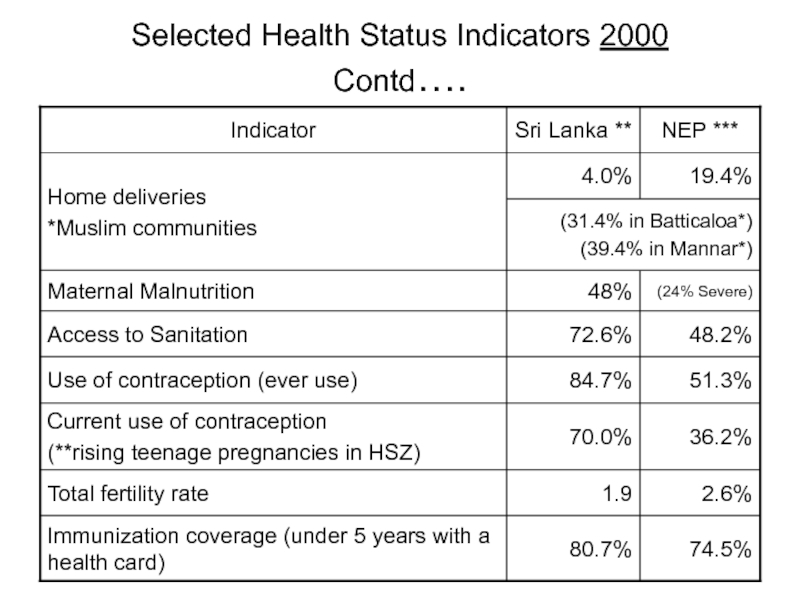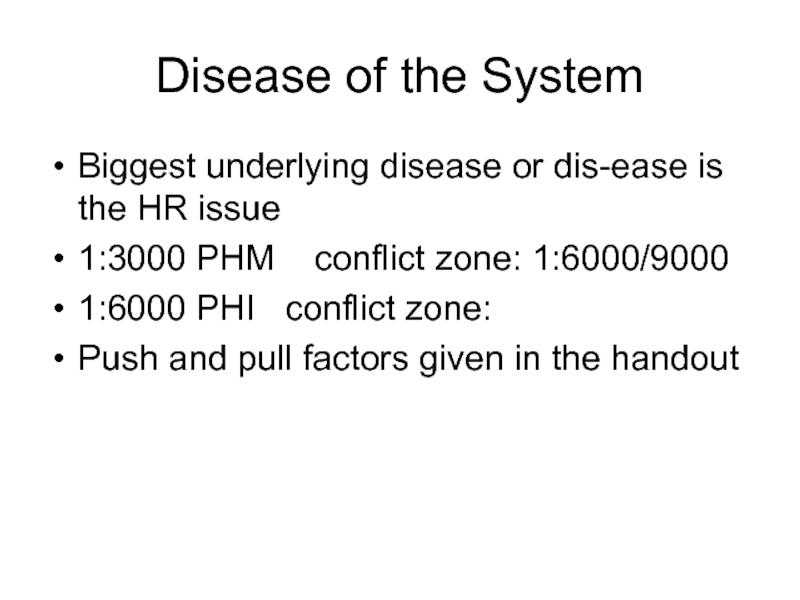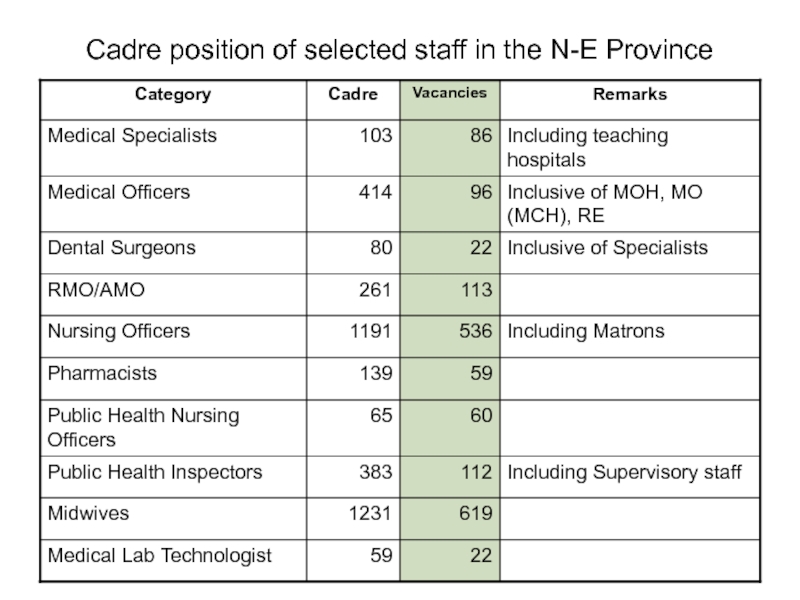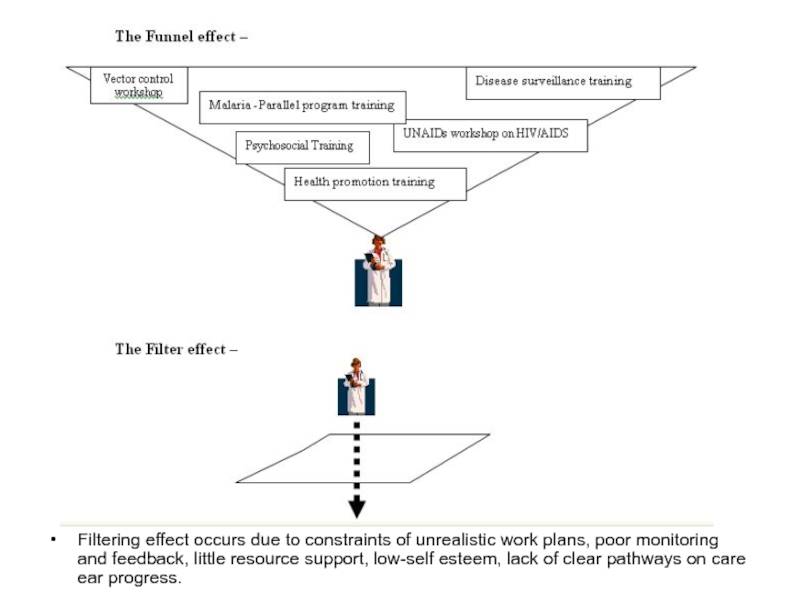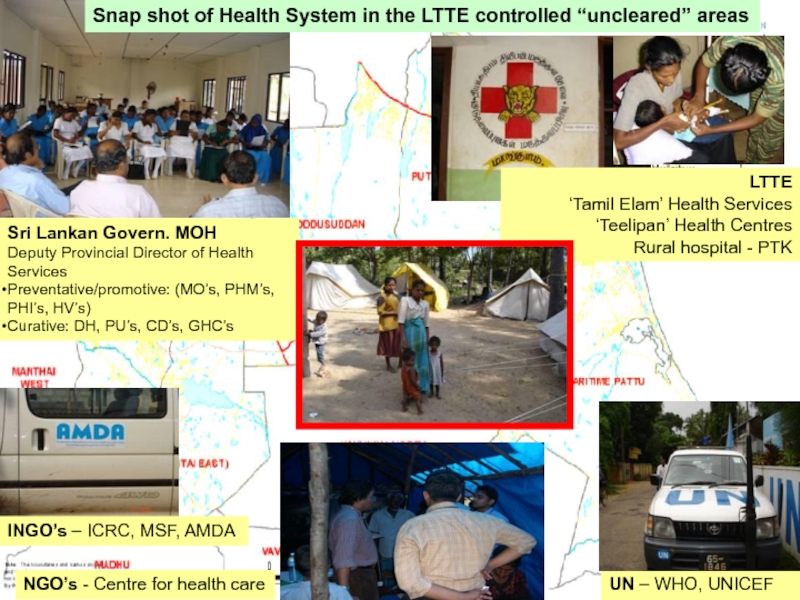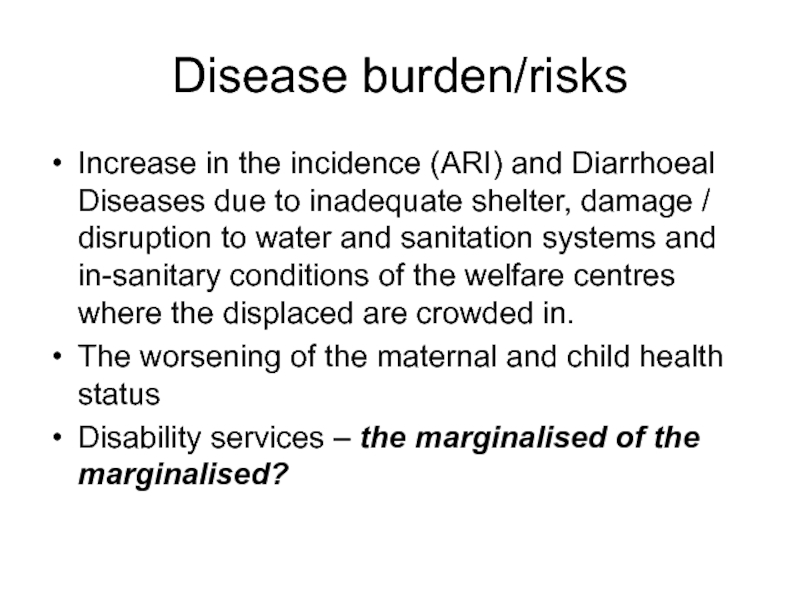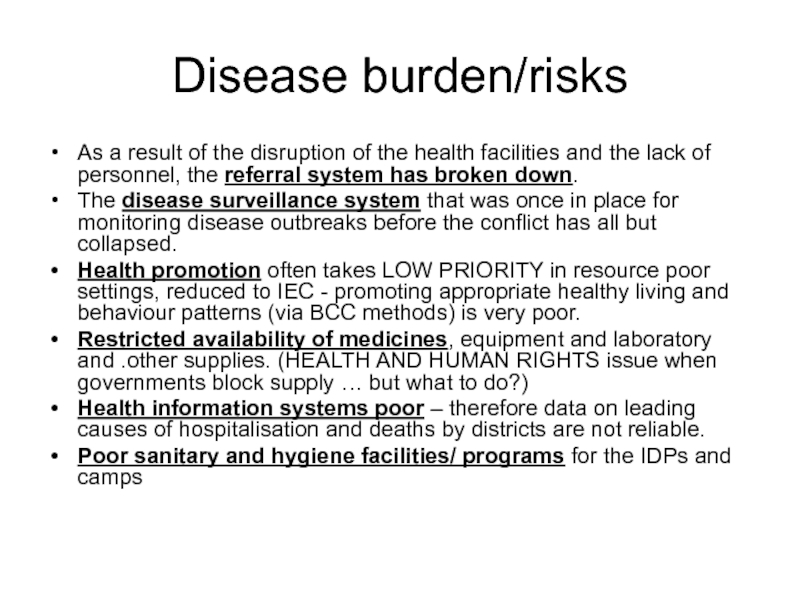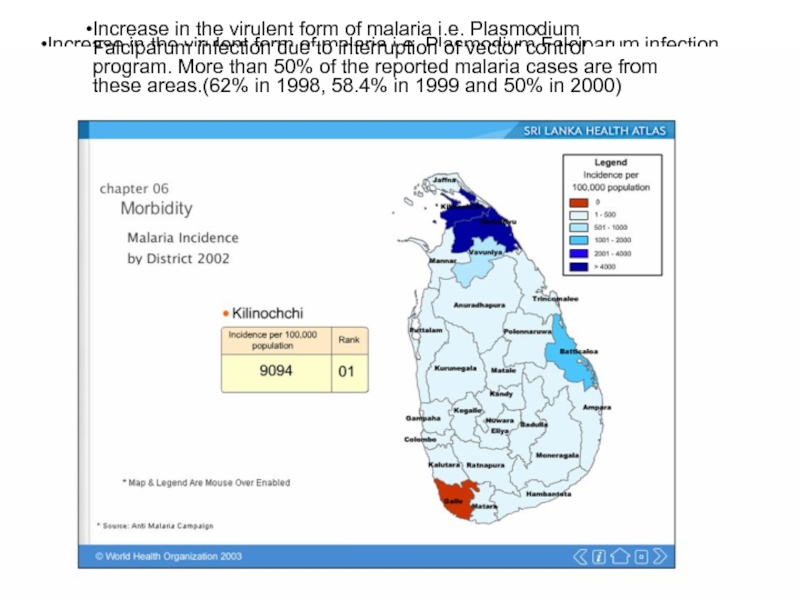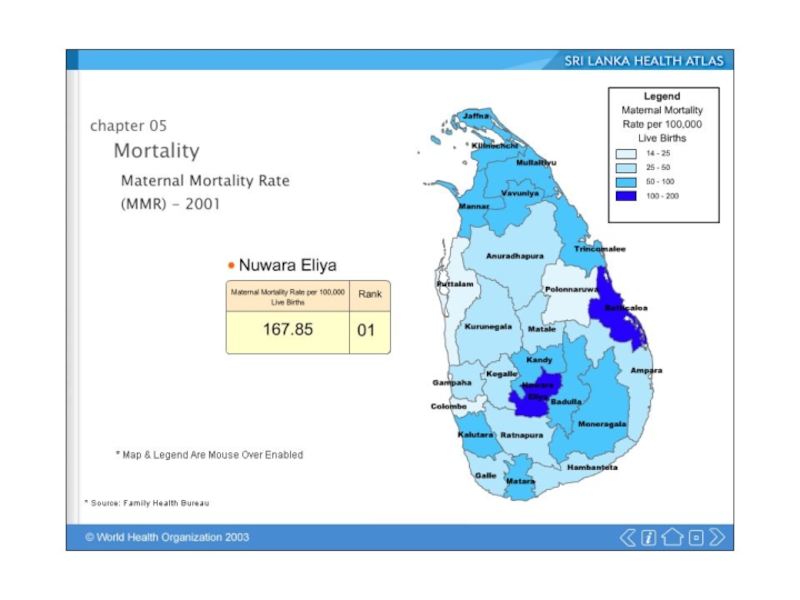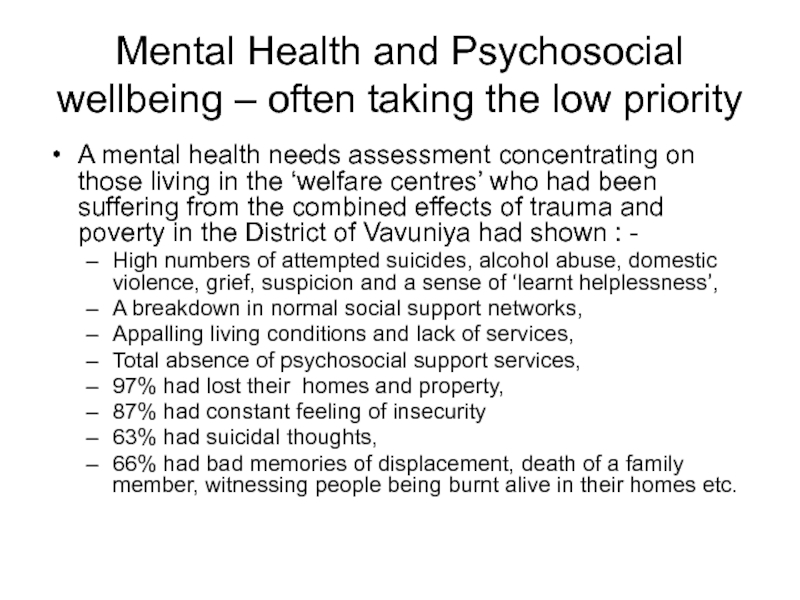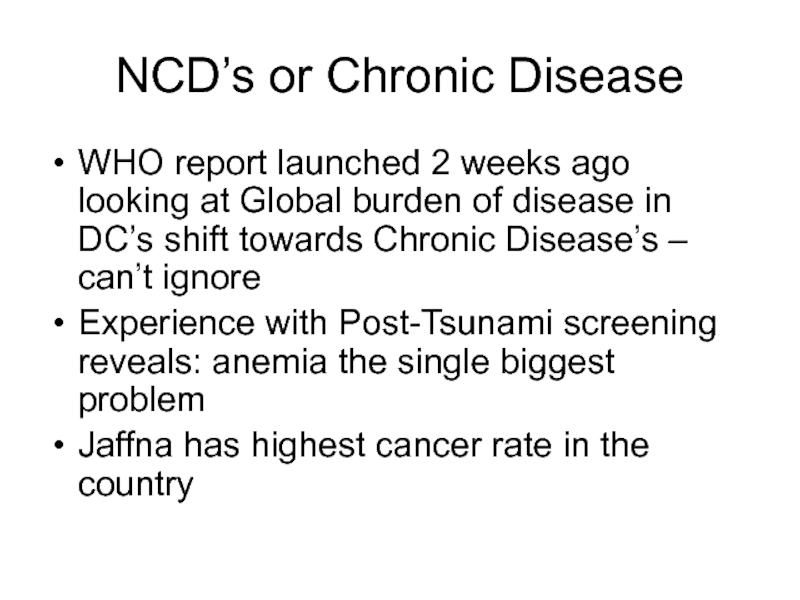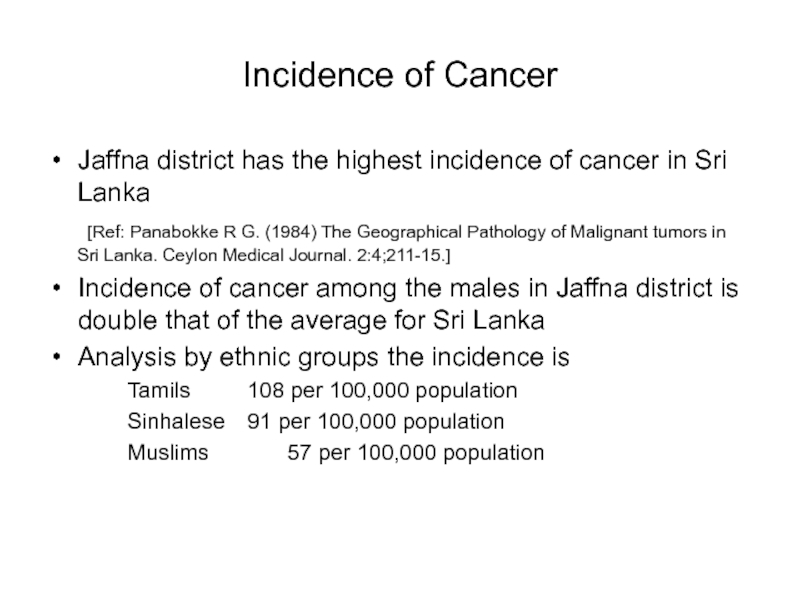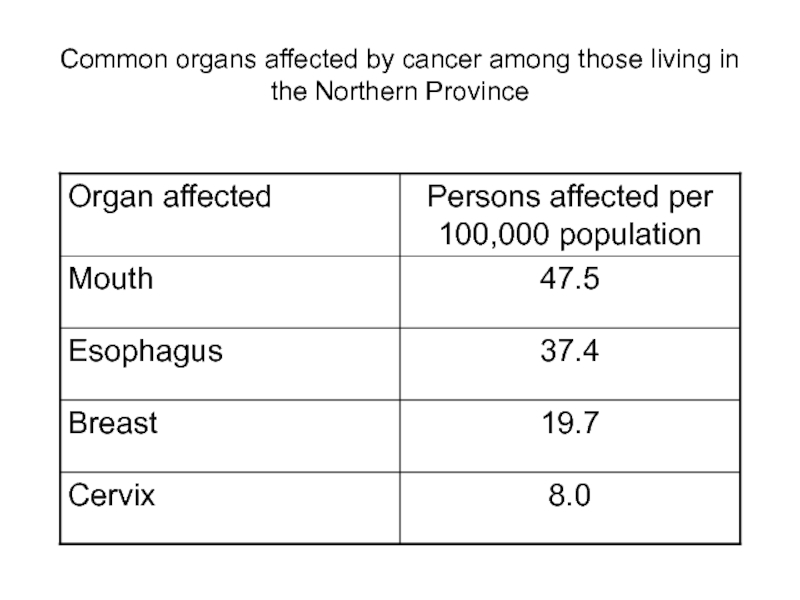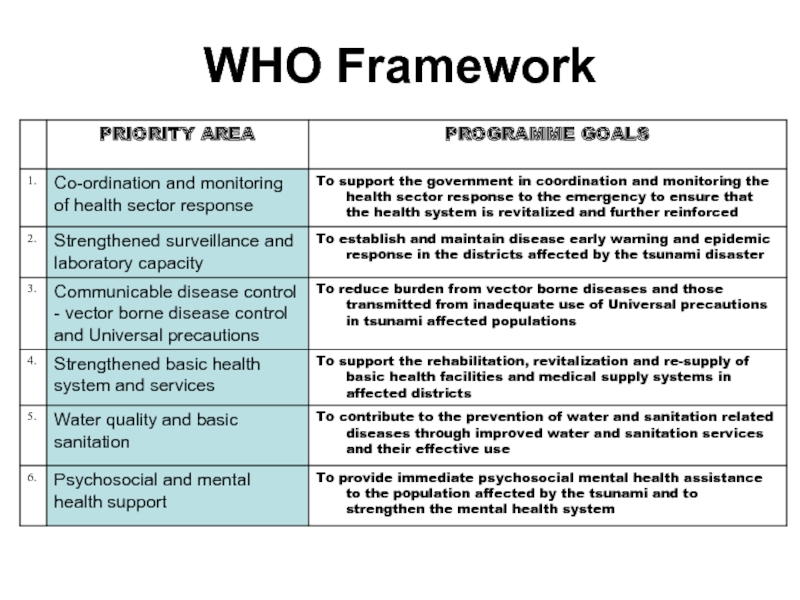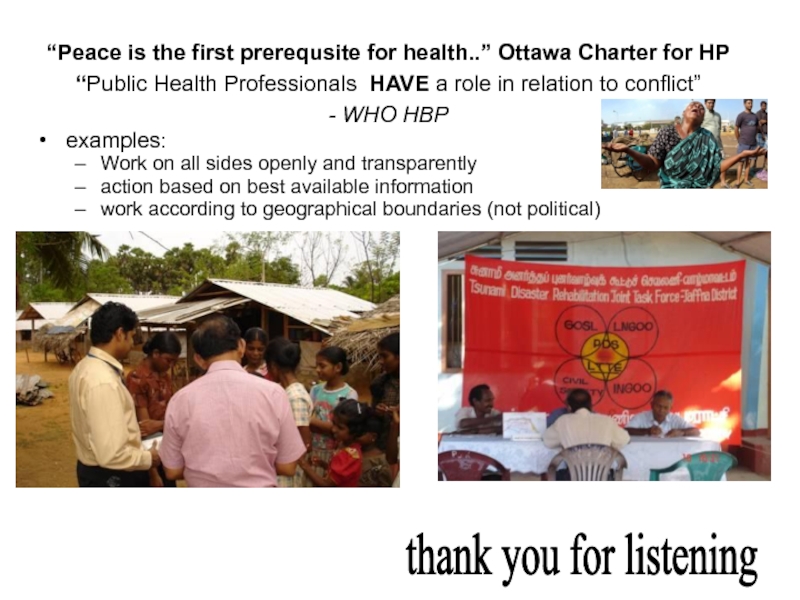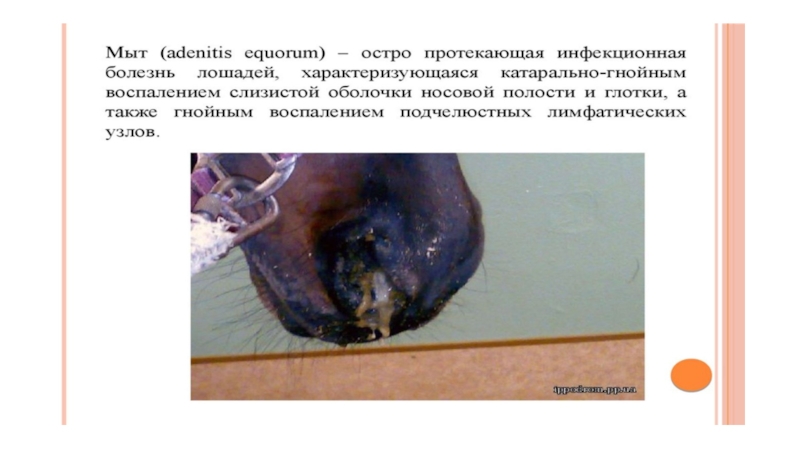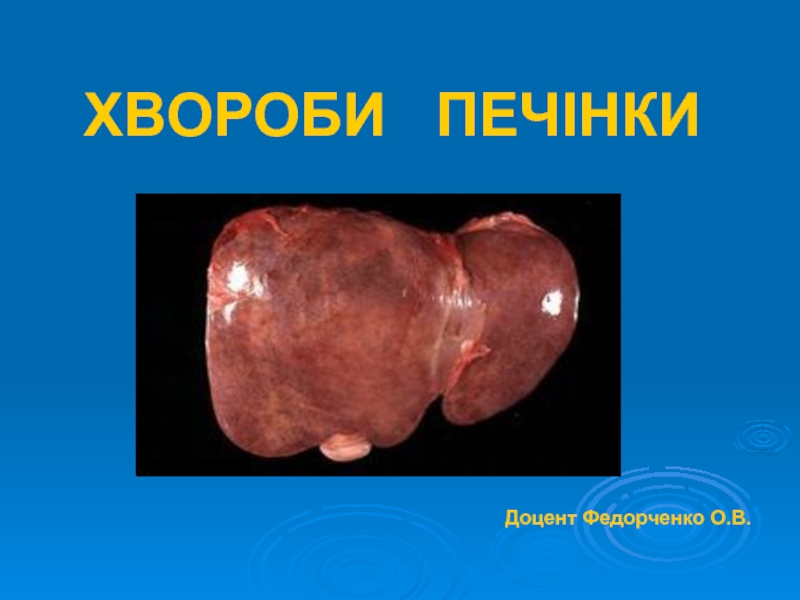Kolitha Wickramage
World Health Organization, Sri Lanka.
University of NSW, School of Public Health and Community medicine, Sydney, Australia
- Главная
- Разное
- Дизайн
- Бизнес и предпринимательство
- Аналитика
- Образование
- Развлечения
- Красота и здоровье
- Финансы
- Государство
- Путешествия
- Спорт
- Недвижимость
- Армия
- Графика
- Культурология
- Еда и кулинария
- Лингвистика
- Английский язык
- Астрономия
- Алгебра
- Биология
- География
- Детские презентации
- Информатика
- История
- Литература
- Маркетинг
- Математика
- Медицина
- Менеджмент
- Музыка
- МХК
- Немецкий язык
- ОБЖ
- Обществознание
- Окружающий мир
- Педагогика
- Русский язык
- Технология
- Физика
- Философия
- Химия
- Шаблоны, картинки для презентаций
- Экология
- Экономика
- Юриспруденция
Major public health issues in Sri Lanka: recovery of the post-conflict health system in north east Sri Lanka презентация
Содержание
- 1. Major public health issues in Sri Lanka: recovery of the post-conflict health system in north east Sri Lanka
- 2. Overview Brief History of civil conflict (CHE)
- 3. Protagonists…Government of SL, LTTE (tigers) Paramilitary groups
- 4. CFA IDP move towards North, mainly Tamil
- 5. Effects of the conflict in North East
- 6. Sri Lanka Internally Displaced People (IDP)
- 7. Health System in the conflict affected areas
- 8. War and protracted conflict should be viewed
- 9. COMPARATIVE BASIC HEALTH INDICATORS (2000)
- 10. Selected Health Status Indicators 2000 Contd….
- 11. Disease of the System Biggest underlying disease
- 12. Cadre position of selected staff in the N-E Province
- 13. Filtering effect occurs due to constraints
- 14. UN – WHO, UNICEF UN – WHO,
- 15. Disease burden
- 16. Disease burden/risks Increase in the incidence (ARI)
- 17. Disease burden/risks As a result of the
- 18. Increase in the virulent form of malaria
- 20. Mental Health and Psychosocial wellbeing – often
- 21. NCD’s or Chronic Disease WHO report launched
- 22. Incidence of Cancer Jaffna district has the
- 23. Common organs affected by cancer among those living in the Northern Province
- 24. WHO Framework
- 25. “Peace is the first prerequsite for health..”
Слайд 1MAJOR PUBLIC HEALTH ISSUES IN SRI LANKA: Recovery of the post-conflict
Слайд 2Overview
Brief History of civil conflict (CHE) and its impact (IDP)
Video clip
Health
Disease of the Health system
Disease burden – major risks
Recovery Plan –GOSL-WHO-donors
HBP
Слайд 3Protagonists…Government of SL, LTTE (tigers)
Paramilitary groups on both sides, JVP
Singhalese (74%),
69% Buddhist, 16% Hindu, 8% Muslim, 7% Christian
65,000 deaths due to Tamil/Singhala War, riots in 1983, call for separatist state
~ 45,000 deaths mainly youths between JVP-GOSL violence 1990’s
Слайд 4CFA IDP move towards North, mainly Tamil
Returning refugees (mainly India), increased
CFA IDP move towards North, mainly Tamil
Returning refugees (mainly India), increased health risks and vulnerability
Слайд 6Sri Lanka Internally Displaced People (IDP)
conservative estimate around 800,000 to
The displaced are of different categories:
have migrated or,
found asylum as refugees in other countries.
have migrated internally down south to other parts of the country where there is no conflict and are living on their own or with relatives and friends.
Shifted to within the conflict affected area -‘welfare centres’.
Слайд 8War and protracted conflict should be viewed as a disease
30 years
Jaffna had the best IMR and child nutrition status in the country, infact it was even better than Washington DC!
Today: Nutritional survey of children under 3 years living in Jaffna in 1993:
18.9% were wasted (acutely malnourished)
31.4% were stunted (Chronically malnourished)
40% were below expected weight for age (Sivarajah, ’94)
Child soldiers and nutrition - comment by LTTE political head
Слайд 11Disease of the System
Biggest underlying disease or dis-ease is the HR
1:3000 PHM conflict zone: 1:6000/9000
1:6000 PHI conflict zone:
Push and pull factors given in the handout
Слайд 13
Filtering effect occurs due to constraints of unrealistic work plans, poor
Слайд 14UN – WHO, UNICEF
UN – WHO, UNICEF
NGO’s - Centre for health
Sri Lankan Govern. MOH
Deputy Provincial Director of Health Services
Preventative/promotive: (MO’s, PHM’s, PHI’s, HV’s)
Curative: DH, PU’s, CD’s, GHC’s
Snap shot of Health System in the LTTE controlled “uncleared” areas
INGO’s – ICRC, MSF, AMDA
LTTE
‘Tamil Elam’ Health Services
‘Teelipan’ Health Centres
Rural hospital - PTK
Слайд 16Disease burden/risks
Increase in the incidence (ARI) and Diarrhoeal Diseases due to
The worsening of the maternal and child health status
Disability services – the marginalised of the marginalised?
Слайд 17Disease burden/risks
As a result of the disruption of the health facilities
The disease surveillance system that was once in place for monitoring disease outbreaks before the conflict has all but collapsed.
Health promotion often takes LOW PRIORITY in resource poor settings, reduced to IEC - promoting appropriate healthy living and behaviour patterns (via BCC methods) is very poor.
Restricted availability of medicines, equipment and laboratory and .other supplies. (HEALTH AND HUMAN RIGHTS issue when governments block supply … but what to do?)
Health information systems poor – therefore data on leading causes of hospitalisation and deaths by districts are not reliable.
Poor sanitary and hygiene facilities/ programs for the IDPs and camps
Слайд 18Increase in the virulent form of malaria i.e. Plasmodium Falciparum infection
Increase in the virulent form of malaria i.e. Plasmodium Falciparum infection due to interruption of vector control program. More than 50% of the reported malaria cases are from these areas.(62% in 1998, 58.4% in 1999 and 50% in 2000)
Слайд 20Mental Health and Psychosocial wellbeing – often taking the low priority
A
High numbers of attempted suicides, alcohol abuse, domestic violence, grief, suspicion and a sense of ‘learnt helplessness’,
A breakdown in normal social support networks,
Appalling living conditions and lack of services,
Total absence of psychosocial support services,
97% had lost their homes and property,
87% had constant feeling of insecurity
63% had suicidal thoughts,
66% had bad memories of displacement, death of a family member, witnessing people being burnt alive in their homes etc.
Слайд 21NCD’s or Chronic Disease
WHO report launched 2 weeks ago looking at
Experience with Post-Tsunami screening reveals: anemia the single biggest problem
Jaffna has highest cancer rate in the country
Слайд 22Incidence of Cancer
Jaffna district has the highest incidence of cancer in
[Ref: Panabokke R G. (1984) The Geographical Pathology of Malignant tumors in Sri Lanka. Ceylon Medical Journal. 2:4;211-15.]
Incidence of cancer among the males in Jaffna district is double that of the average for Sri Lanka
Analysis by ethnic groups the incidence is
Tamils 108 per 100,000 population
Sinhalese 91 per 100,000 population
Muslims 57 per 100,000 population
Слайд 25“Peace is the first prerequsite for health..” Ottawa Charter for HP
“Public
- WHO HBP
examples:
Work on all sides openly and transparently
action based on best available information
work according to geographical boundaries (not political)
thank you for listening
